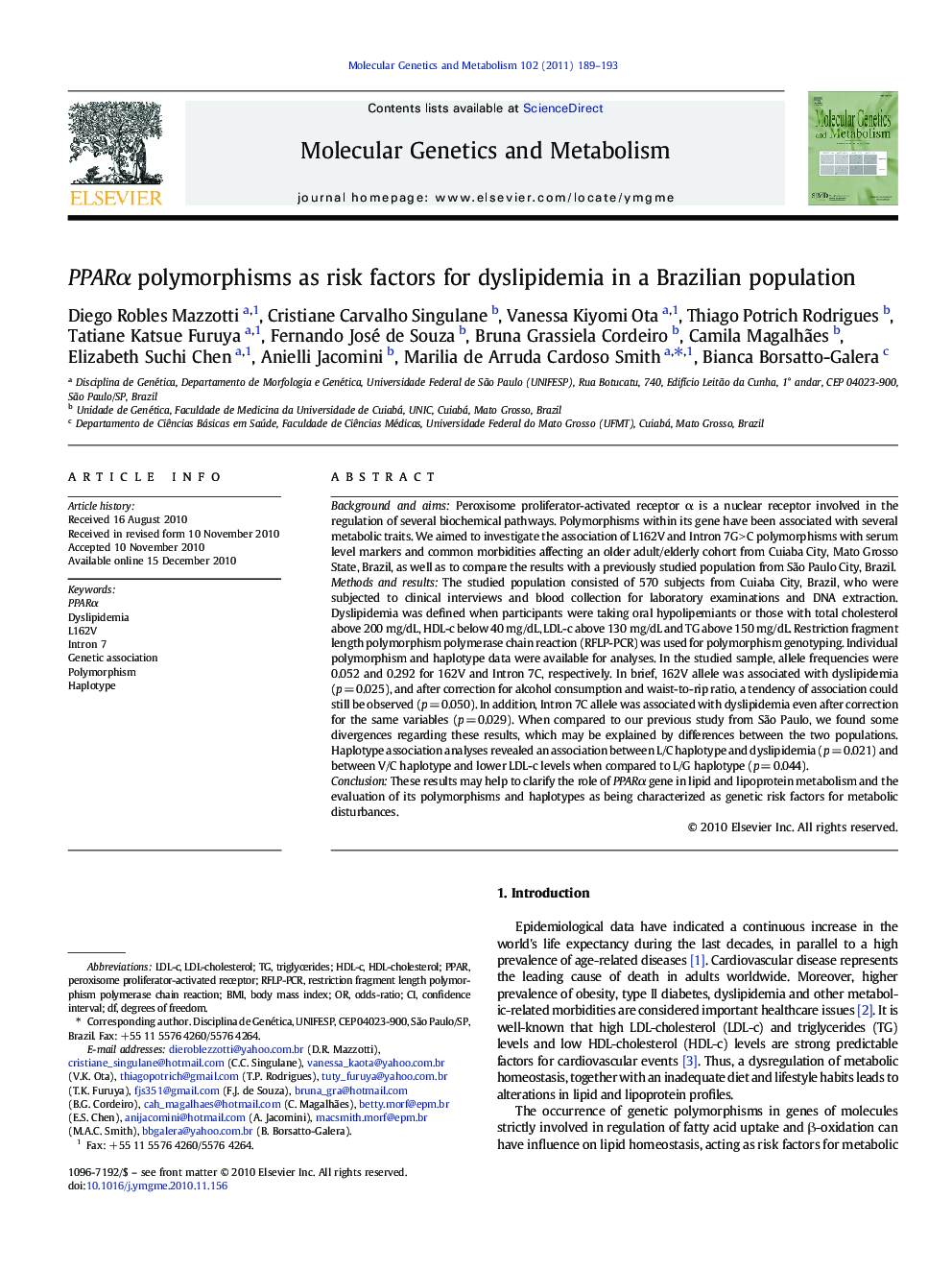| کد مقاله | کد نشریه | سال انتشار | مقاله انگلیسی | نسخه تمام متن |
|---|---|---|---|---|
| 1999227 | 1065846 | 2011 | 5 صفحه PDF | دانلود رایگان |

Background and aimsPeroxisome proliferator-activated receptor α is a nuclear receptor involved in the regulation of several biochemical pathways. Polymorphisms within its gene have been associated with several metabolic traits. We aimed to investigate the association of L162V and Intron 7G > C polymorphisms with serum level markers and common morbidities affecting an older adult/elderly cohort from Cuiaba City, Mato Grosso State, Brazil, as well as to compare the results with a previously studied population from São Paulo City, Brazil.Methods and resultsThe studied population consisted of 570 subjects from Cuiaba City, Brazil, who were subjected to clinical interviews and blood collection for laboratory examinations and DNA extraction. Dyslipidemia was defined when participants were taking oral hypolipemiants or those with total cholesterol above 200 mg/dL, HDL-c below 40 mg/dL, LDL-c above 130 mg/dL and TG above 150 mg/dL. Restriction fragment length polymorphism polymerase chain reaction (RFLP-PCR) was used for polymorphism genotyping. Individual polymorphism and haplotype data were available for analyses. In the studied sample, allele frequencies were 0.052 and 0.292 for 162V and Intron 7C, respectively. In brief, 162V allele was associated with dyslipidemia (p = 0.025), and after correction for alcohol consumption and waist-to-rip ratio, a tendency of association could still be observed (p = 0.050). In addition, Intron 7C allele was associated with dyslipidemia even after correction for the same variables (p = 0.029). When compared to our previous study from São Paulo, we found some divergences regarding these results, which may be explained by differences between the two populations. Haplotype association analyses revealed an association between L/C haplotype and dyslipidemia (p = 0.021) and between V/C haplotype and lower LDL-c levels when compared to L/G haplotype (p = 0.044).ConclusionThese results may help to clarify the role of PPARα gene in lipid and lipoprotein metabolism and the evaluation of its polymorphisms and haplotypes as being characterized as genetic risk factors for metabolic disturbances.
Journal: Molecular Genetics and Metabolism - Volume 102, Issue 2, February 2011, Pages 189–193